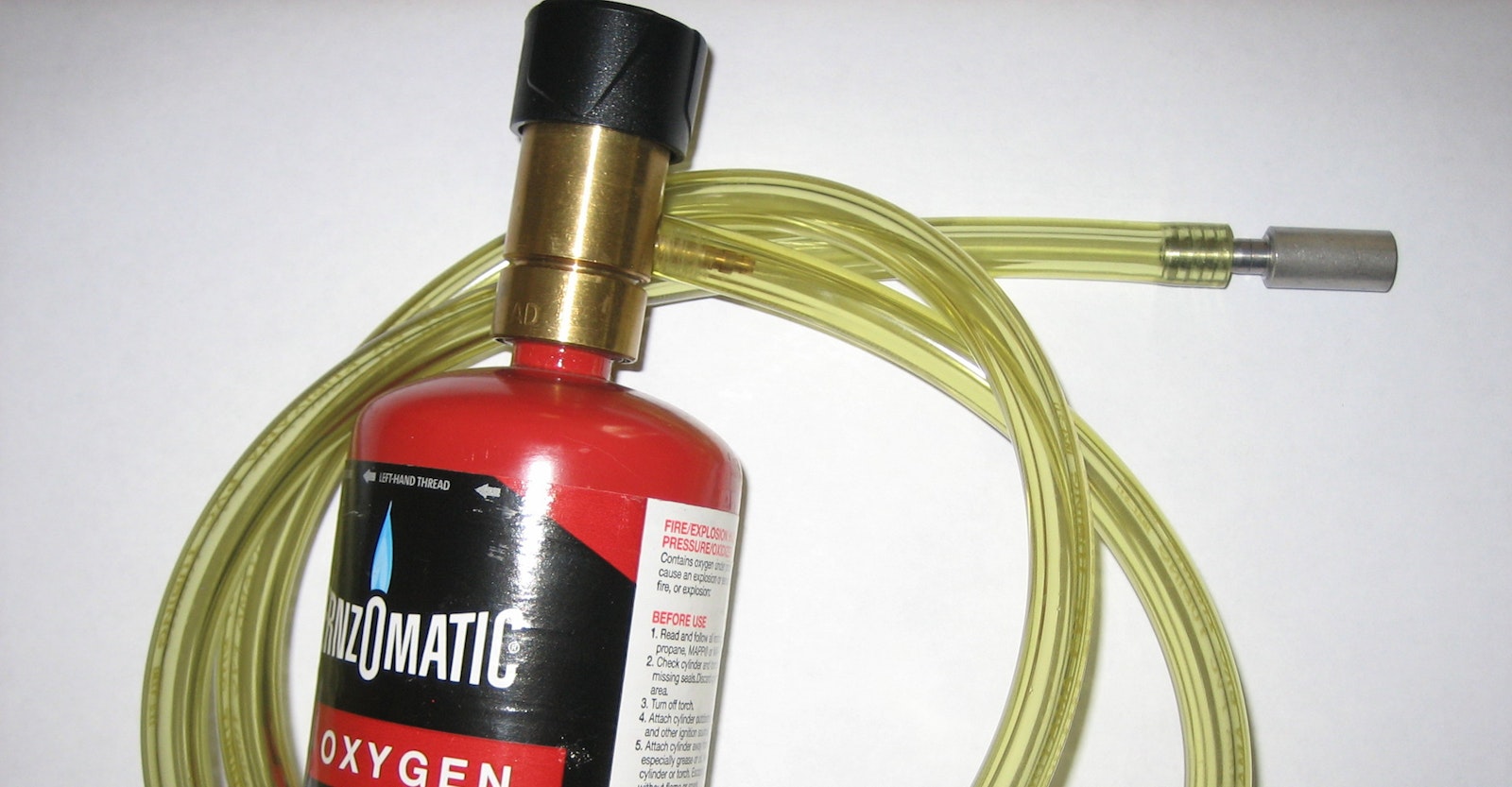Oxygen can lead to off flavors in beer after fermentation, but dissolved oxygen in wort is an essential element for yeast health. Specifically, yeast cells rely on oxygen for the biosynthesis of cell membranes, a critical step in the growth and reproduction of pitched cultures.
There are many effective methods for getting oxygen into wort, but nothing beats pure oxygen for speed and efficiency. Experiments at Wyeast Laboratories have shown that just 60 seconds of pure oxygen, pumped into chilled wort through a diffusion stone, can achieve 12 parts per million (ppm) of dissolved oxygen. Wyeast notes that most yeast strains require 10 ppm or more of dissolved oxygen for optimal health, perhaps a bit more for lagers and high-gravity styles.
Using pure oxygen is actually quite simple. You really just need four things:
1. A stainless steel 0.5-micron diffusion stone.
These are readily available at homebrew shops and usually cost less than $20. Homebrew stones feature a barbed fitting that slides into ¼” inner diameter (I.D.) plastic tubing. Be sure to get the 0.5-micron model. The 2-micron stone is more suited for aquarium pumps. Avoid touching the sintered surface of the stone, as oils from your hands can clog the pores.
2. A length of ¼" (I.D.) plastic tubing.
Not much to say here, except that it never hurts to buy slightly more than you think you’ll need.
3. An oxygen regulator.
There are two kinds, and the one you choose depends on the oxygen source you plan to use. Dual gauge oxygen regulators resemble the CO2 regulators found in kegging setups and work with large oxygen tanks, such as those available at medical supply stores or through your local welder. Small single-knob regulators work with the disposable cylinders of oxygen you can buy at the hardware store.
4. An oxygen source.
If you brew a lot, it may be worth your while to invest in a steel or aluminum oxygen tank for its financial, environmental, and convenience advantages. These can hold enough pure oxygen to last you hundreds of batches. Small disposable oxygen cylinders are available at most hardware stores and may be more convenient, depending on how often you brew. Each cylinder should last you for about ten to fifteen 5-gallon (19-liter) batches of brew.
Setup is pretty straightforward. First, make sure the stone and tubing are sanitized by dunking them in, or spraying them with, your sanitizer of choice. Then slip one end of the tubing over the barbed end of the diffusion stone and attach the other end to your regulator’s outflow valve. Connect the regulator to the tank, and you’re ready to oxygenate!
With low-tech shaking and splashing, there’s no risk of adding too much oxygen to wort, but with a pure gas supply, it’s possible to over-oxygenate, which may or may not cause problems (at the very least, it’s a waste of gas). So set your timer for 60 seconds, dunk the business end of the stone into cool wort, and slowly turn on the regulator until you just start seeing bubbles breach the surface. Start the timer, and when your minute is up, pitch the yeast.
When it comes to making great beer, oxygenation is up there with temperature control and pitching sufficient yeast. If you spend the small amount of time and money to ensure adequate dissolved oxygen, I promise you’ll notice an improvement in the quality of your brew.

